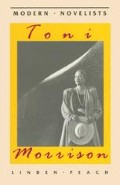Abstract
The innovatory nature of Morrison’s first two novels is derived from the ways in which their radical content is allowed to determine their experiment with form. Ostensibly The Bluest Eye is about a lonely, victimised, black girl, Pecola Breedlove, who is driven insane by her desire to have white skin, blonde hair and blue eyes, and the interplay between her disintegration and a number of black characters who are more fully integrated into white society. But even a casual reader cannot help but notice that there is more to the book than this. At the outset of the novel Morrison adapts the eighteenth and nineteenth-century convention whereby work by a black American often carried a preface from a white writer confirming the authenticity of the black authorship. In its preface, which provides an introduction to some of the chapters, extracts from a Dick-Jane American primer present a standardised, white American family embracing Euro-American views of beauty and happiness. This introduces the major theme of The Bluest Eye, that the white voice is inappropriate to dictate the contours of African-American life. At the end of the novel Claudia and Frieda overhear snippets of gossip about the Breedloves that summarise the social consequences of this imposition: none of them seem ‘right’; they don’t have relatives; they are ugly.
Preview
Unable to display preview. Download preview PDF.
Copyright information
© 1995 Linden Peach
About this chapter
Cite this chapter
Peach, L. (1995). The Bluest Eye (1970). In: Toni Morrison. Macmillan Modern Novelists. Palgrave, London. https://doi.org/10.1007/978-1-349-24176-7_2
Download citation
DOI: https://doi.org/10.1007/978-1-349-24176-7_2
Publisher Name: Palgrave, London
Print ISBN: 978-0-333-62244-5
Online ISBN: 978-1-349-24176-7
eBook Packages: Palgrave Literature & Performing Arts CollectionLiterature, Cultural and Media Studies (R0)

